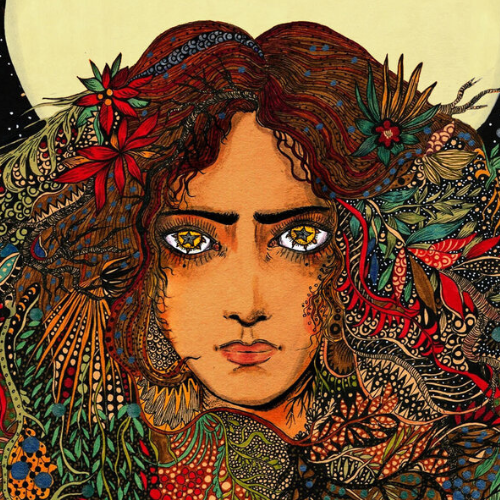Image: Cover design of Lobizona by Kerri Resnick, featuring art by Daria Hlazatova
The fantasy genre, particularly young adult fantasy, is (slowly) becoming more diverse. Authors like Tomi Adeyemi, Sabaa Tahir, Tahereh Mafi, and Chole Gong have written well-received and very popular fantasy novels. Yet, there are almost no fantasy novels by Latinx authors or starring Latinx characters that have entered my radar or the radar of BookTok.
I don’t mean to discount the fantastic gains other marginalized authors have made in fantasy or literature as a whole, but Black, Asian, and other authors and characters of color still need more representation in the fantasy genre. But that got me thinking about the lack of Latinx representation in fantasy and why it has yet to gain that kind of momentum in recent literature.
So here are three reasons why Latinx characters are underrepresented in fantasy literature.
- Fantasy has a long history of racism.
Fantasy fiction as categorized in The Lord of the Rings routinely erases real-world people of color in favor of representing a variety of fantastical “races.” Good guys (elves, dwarves, hobbits) are described as white and the bad guys (orcs, goblins, dark elves) are described as dark-skinned, and unlike in the real world, it is based on biological differences. But this isn’t just in The Lord of the Rings. In A Court of Thorns and Roses by Sarah J. Maas, the good guys, Spring Court, were described as having pale skin, blonde hair, and blue eyes while the bad guys, Night Court, were described as dark-skinned. While people love to say fantasy doesn’t see racism, it does. The fantasy system created by the author represents the author’s outlook on life: who do they see as the top of the food chain, who are the bad guys, who gets to be the hero, and who gets to be the villain?
- What does it mean to be Latinx in a fantasy world?
Latin America is one of the most diverse places on the planet with its residents becoming united and divided by language, culture, and history, not by race. So if you want to include Latinx people in your fantasy novel, it would either need to be in your own world where you can set up your own races and the history behind them or in a world similar to our own where the knowledge is there for the reader. There lies the problem. It can become hard to create a world that represents Latin America since Latin America has a messy history and development, which makes the creation of a fantasy world a little more complicated. That doesn’t mean it can’t be done, clearly. Fantasy authors have everlasting imagination, it’s in the job description, and it shouldn’t pose any roadblocks when it comes to creating Latinx characters.
- There just aren’t enough Latinx authors.
In 2022, Zippia stated that the most common ethnicity of authors is White (79.4 percent), followed by Latinx (7.2 percent), African American (5.8 percent), and Asian (4.0 percent). If Latinx authors, just like any author of color, don’t get a shot at telling stories about people like themselves and the history of their culture, then there aren’t going to be stories that represent Latinx people. With Latinx authors making up only 7.2 percent of the authors publishing in 2022 that means we, as diverse readers, have to make more of an effort to read books by authors of color, women, and LGBTQIA+ authors. If we want a change, we have to show the publishing industry that we do want to read and support these stories.
Here are some of my recommendations if you want to read some Latinx fantasy literature:
- Cemetery Boys by Aiden Thomas
- Lobizona by Romina Garber
- Together We Burn by Isabel Ibañez
- Velvet Was the Night by Silvia Moreno-Garcia

